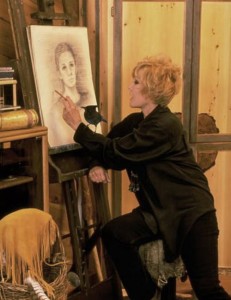The professor has invented a time-traveling machine that operates on a computer named OSKA. He intends to use it to travel back in time himself but the machine cannot hold his weight and so the children volunteer to go in his place. However, when the machine begins to malfunction, Paul and Fiona realize that traveling back in time can be awfully confusing. They never know what era they are going to stop in!
"Where are we??" - Paul
"You mean, when are we?!" - Fiona
A Hitch in Time, also known as Professor Wagstaff's Time Machine, is a fun Saturday morning children's film that was released in England through the CFF ( Children's Film Foundation ) in 1978.
T.E.B. Clarke's script was clearly aimed towards juveniles and spirals into silliness towards the end, but the film can be appealing to adults as well, especially those who enjoy Patrick Troughton's work. It is amusing to see him in another time-traveling predicament like he often was in on Doctor Who, where he played the second Doctor.
The story seems like it was based upon a book but T.E.B. Clarke wrote it directly for the film. Clarke was quite a popular screenwriter in England and was equally adept at writing comedies ( The Titfield Thunderbolt, The Lavender Hill Mob ) as well as dramas ( The Blue Lamp, Sons and Lovers ). A Hitch in Time is definitely more amusing than dramatic and Clarke adds a few clever touches to the story to make it less predictable than one may think. What is especially clever is that the children continually run into ancestors of "old Sniffy" ( Jeff Rawle of Harry Potter fame ), the schoolmaster Paul dislikes, and Fiona's grandfather.
The film has a runtime of less than one hour which speeds along like a flash of light. It is available online to rent via the BFI Player and is also available on the DVD collection of CFF films called Weird Adventures.






















